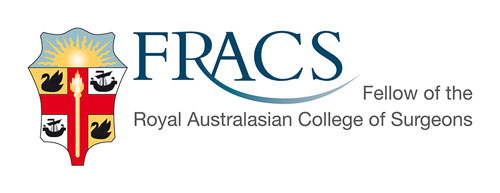VASECTOMY - a minor operation for permanent birth control.
Dr LP Cheah's preferred method at Melbourne Surgery is to use the No-Scalpel technique to resect a segment of the vas by making tiny holes(usually smaller than keyhole surgery cuts) in the scrotal skin
Before having a vasectomy, you should think discuss this carefully with your partner. (Are you sure that you do not wany any more children? If you have 2 children already, what about one more for the country? Ask yourself too, what if relationship circumstances change in future?)
A vasectomy only blocks the path of the sperm. It does not affect your sex drive/ability to have an erection etc.
Procedure
This is usually done as a day case under either local anaesthesia with sedation or general anaesthesia.
A small skin opening is made over each vas. (In the No-Scalpel technique, the skin over the vas is split open with the sharp dissectors)
The vas deferens is grasped and pulled out of the small hole. The vas is then carefully dissected from the surrounding tissue. A segment of the vas is then resected.
The ends can then either be tied(Closed technique - this reduces the rate of vasectomy failure) or the ends can be left open(Open technique - this improves the chance of vasectomy reversal and has less risk of post-vasectomy pain) Dr LP Cheah usually ties one end but leave the end from the testis open.
The wound in the skin is closed with a dissolvable stitch.
The procedure itself usually takes about 15 minutes.
Post-op Management
Scrotal support/firm underwear is recommended after the operation. The can be some discomfort, tenderness and swelling in the first few days. Simple analgesics such as Paracetamol can be taken.
Vigorous exercise(inc cycling, contact sports - rugby, footy) should be avoided for 2 weeks because of the risk of bleeding.
IMPORTANT - The vasectomy does not make one sterile immediately as there will still be sperm in the rest of the vas that is not cut/removed. It takes about 6-15 ejaculations to clear all the sperm. The semen needs to be tested twice in 2 to 3 months time to confirm that there is no longer any sperm in the semen on BOTH occasions(there is still a 20% chance of sperm being present in the first specimen)
Risks
As with any surgical procedures, there are risks of complications such as:
1. Bruising/haematoma in the scrotum
2. Wound breakdown/infection
3. Pain/testicular ache - this could be due to the surgery itself. Occasionally, there may be chronic pain due to backpressure on the testicle and epididymis.
4. Irreversible - A vasectomy should be considered an irreversible procedure. Should family circumstances change in future and one wishes to have the vas rejoined by microsurgery, there is no guarantee that this will be successful(only one third of patients have mobile sperm following a reversal)
5. Sperm granuloma/development of antisperm antibodies - There is a small risk that a lump may develop due to sperm backing up in one end of the cut vas. Also the sperm that remains in the testis may cause the body to develop antibodies against it.
6. Failure - although vasectomy has the highest success rate compared to common birth control methods, it is not 100%(1 in 2000 risk of pregnancy once there is no more sperm detected in the semen). That is why it is important to have the semen checked twice to ensure there is no longer any sperm in it. Rarely someone may have more than one vas deferens on one side or the vas may recanalize after the surgery - this will require a second operation.
7. Regret with decision - especially for men who have it under the age of 30(1-2%). Prior storage of sperm in a sperm bank can reduce this risk.
Summary
A vasectomy is generally a common, safe and effective surgical operation with a low risk of serious complications.
The results are not immediate - it takes weeks to achieve sterility as there may still be residual motile sperm in the unresected vas.
Semen needs to be checked post-op twice 3 months after the surgery(there is a 20% chance there may still be residual old sperm in the first specimen) - you need to return for a final appointment after that.
A vasectomy should be considered a permanent irreversible procedure to achieve sterility. It may not be possible to reverse the vasectomy successfully. Alternatives after that include harvesting sperm directly from the testicle.
It is important to discuss this in detail with your partner, general practitioner and your surgeon.

